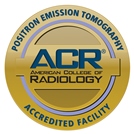A high field open MRI combines the strength and accuracy of 1.5 Tesla or higher imaging, with a machine design that’s ideal for patients who experience claustrophobia. This can result in greater detail for diagnostic purposes and accommodate a wider range of patients.
What Is a High Field Open MRI?
Patients who cannot be in fully enclosed spaces are often unable to undergo a traditional MRI without taking a sedative. Open MRIs attempt to create a more relaxing environment that puts these patients at ease and simultaneously suits a wider range of body types.
These machines feature open sides, a flared end and larger inner diameter, resulting in better ventilation with more head and neck room. A shorter, open bore also means some patients may keep their head outside during the exam.
Closed MRIs require the patient to lie on a table that slides into a tunnel as images are taken. While this technology has typically yielded higher-quality images, the design:
- Is often too narrow for larger patients
- Does not accommodate select patients with disabilities
- Deters patients with claustrophobia or a similar condition
Traditionally, open MRIs used low-field imaging, which results in a less-clear image. Today, the incorporation of high field imaging reduces scan time and provides more detailed results, which can improve diagnostic accuracy and decrease the need for additional testing.
The combination of an open scanner and high field imaging delivers the following benefits:
- Shorter imaging times, with the procedure taking anywhere from 15 to 30 minutes.
- Patients are less likely to move around, feeling more comfortable and relaxed.
- Smaller areas of the body can be viewed in more detail, leading to precise diagnoses.
- Scanning typically produces digital images, which are then sent directly to a doctor.
- Some contact may be possible, such as a family member in the room during the scan.
Aside from these differences, all forms of MRI provide non-invasive, radiation-free imaging that’s ideal for observing soft tissue.
What Are the Uses of a High Field Open MRI?
High field open MRI is ideal for high-resolution applications, including diagnostic imaging to assess the muscles, joints, bones, cardiovascular system, tendons, ligaments, cartilage or the brain. These details can help your doctor develop a more accurate treatment plan.
In addition to identifying signs of injury, a high field open MRI can help examine progressive and degenerative conditions, including arthritis and osteoporosis, as well as observe the central nervous system.
What to Expect During an Open-Field MRI
Ahead of an open-field MRI, discuss your medical history with your doctor, including if you have an implanted device or metal located below the skin. These aspects, as well as objects like hearing aids, jewelry and eyeglasses, can become projectiles due to the magnetic field. Patients are also advised to notify their doctor if they are or think they may be pregnant.
Little preparation is required before the procedure; typically, you can eat, drink and take medications as normal. On the day of the MRI, remove all jewelry, metal items and expect to change into a hospital gown or scrub tops and bottoms. You may be given a contrast dye intravenously, which highlights the areas of your body being examined and helps create images with enhanced detail.
Similar to a closed MRI, you will lie still in an open high field machine and should expect to hear periodic clicking and knocking sounds. You have the option of wearing earplugs or headphones to reduce noise exposure.
The technologist performing the procedure will communicate with you through an intercom and may request that you occasionally shift your position for better visibility. If you have any concerns during the procedure, you can notify the technologist through the same intercom system. The procedure typically lasts at least 30 minutes.
Patients can return to their daily life after a high field open MRI. In the meantime, your doctor will review the results and contact you to schedule follow-up testing or treatment.
Has your doctor recommended a high field open MRI? Contact Midstate Radiology Associates to make an appointment.
















